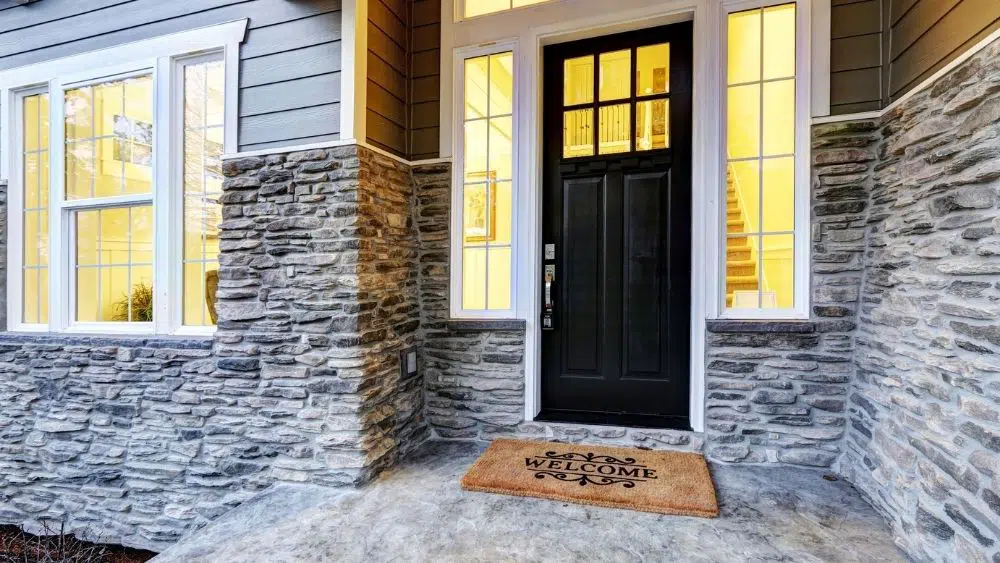
Stone siding creates a timeless look with lasting quality, and homeowners can enjoy gorgeous textures and various color options made available with stonework. Choosing a stone pattern enhances the natural beauty of the landscape and highlights the home’s trim and features, all while creating a simple and ageless exterior appearance.
When considering stone as a siding for your house, it’s important to know the facts; here are some of the pros, cons, and styling options available.
The Pros of Stone Siding
Boasting numerous advantages, stone siding not only adds a touch of sophistication but also offers a range of practical benefits. Let’s explore in detail the advantages that make stone siding an exceptional choice for enhancing both the beauty and functionality of a home.
Long Lifespan
One of the key advantages of using stone for the siding of your house is its remarkable longevity. Unlike other materials that may deteriorate over time, stone is highly resistant to weathering, fading, and damage from pests. Its durability ensures that the siding retains its structural integrity and curb appeal even in the face of harsh environmental conditions.
Low Maintenance
Another advantage of this type of siding is its low maintenance requirements for homeowners. Unlike other types of siding that may demand regular painting, sealing, or extensive cleaning, stone siding retains its beauty with minimal effort.
Stone is not only resilient to cosmetic issues such as stains, mold, and fading, but it’s also strong enough to withstand most dents, scratches, and warping. This low maintenance characteristic not only saves homeowners time and effort but also contributes to long-term cost savings. Of course, homeowners should follow the manufacturer’s instructions for care over time.
Suitable For Harsh Climates
Both natural and manufactured stone are resistant to harsh climates, making them a great fit for almost any region. Whether it’s extreme heat, freezing temperatures, or heavy rainfall, stone siding remains steadfast, making it a reliable and long-lasting investment for homeowners.
Aside from being extremely durable against all adverse weather types, stone is naturally resistant to rot, insects, rodents, and other invasive species. Because manufactured stone is typically made to be resistant to environmental dangers, as well as fire-resistant, both it and natural stone are equally strong choices.
Energy Efficient
Stone siding is a great choice for the energy-minded homeowner. The natural density and thermal mass of stone provide excellent insulation, reducing heat transfer and effectively maintaining a comfortable indoor temperature.
In hot climates, stone siding acts as a barrier against solar heat gain, helping to keep the interior cool and reducing the reliance on air conditioning. On the flip side, if you live in a colder region, the thermal mass of stone absorbs and retains heat within your house.
By minimizing the need for excessive heating and cooling, stone siding promotes energy efficiency, leading to potential savings in utility bills and a reduced carbon footprint. Additionally, stone siding provides an excellent sound barrier in high traffic areas.
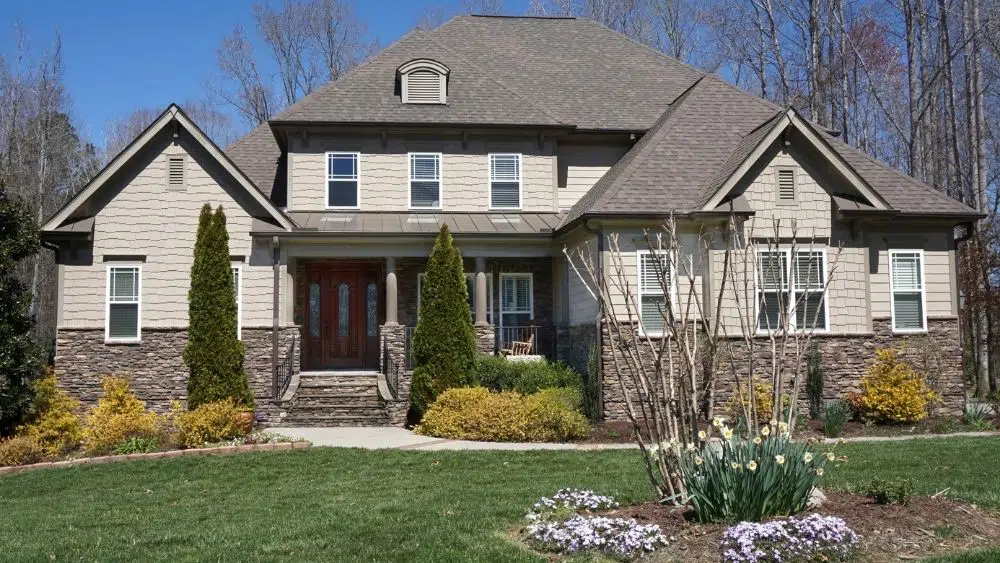
The Cons of Stone Siding
While using stone as siding for your house has numerous benefits, it is crucial that you consider its potential drawbacks so that you can make an informed decision about what is best for you. Let’s take a closer look at some of the disadvantages of using stone siding on your house.
High Material and Installation Cost
Natural stone is among the most expensive of siding options for a house. It can range in price from $35 to $50 per square foot installed, depending on factors such as the type of stone, material availability, size of the home, and current labor costs in the area.
While this upfront expense is high, it includes an incomparable return on investment when considering future resale value and energy efficiency. Cultured stone, typically a more affordable alternative to authentic stone, costs around $5 to $8 per square foot installed. This is partially due to its lighter weight, allowing easier transport and installation.
Stone veneer siding offers an affordable alternative to full stone siding by including thinly-cut stones to create the appearance of real stone without the added weight and laborious installation. Veneers typically cost an average of $11 per square foot installed, but may be more depending on the type of stone. These are often sold as sheets to place over another siding material.
Faux stone is a lightweight alternative and inexpensive option that usually costs between $6 and $9 per square foot. Like veneers, these panels must be applied over an underlayment material such as drywall or timber.
Heavy to Transport
Another notable disadvantage is that stone is one of the heaviest materials used for siding, which makes it difficult and expensive to transport. The weight of stone makes it far more labor-intensive, especially compared to other popular materials such as vinyl siding or fiber cement siding.
Additionally, the weight of the stone may require additional structural considerations during the installation process, such as reinforcement of the building’s framing or foundation. While the weight of stone contributes to its durability and stability once installed, it is still important to factor in the logistical implications when considering stone siding for a house.
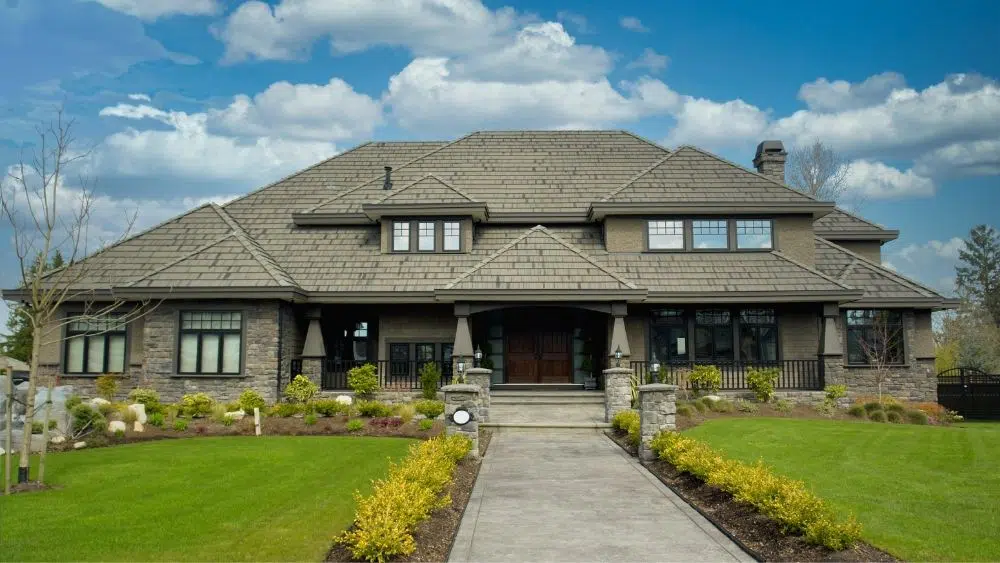
Real Stone vs. Manufactured Stone Veneer
So, you’ve decided on installing stone siding for your house. Now what? Homeowners must first choose between real and manufactured stone. Let’s explore the differences between these two options.
Real Stone
Real stone offers the authentic and classic look of high-end design. However, it also comes with an expensive price tag due to the high cost of materials, labor, and transportation.
When it comes to maintenance, it’s possible that natural stone will require a sealer to be applied once every five years or so. Homeowners should use neutral cleaners without harsh chemicals when washing off debris. Metal and wire brushes should not be used because they may potentially scratch the surface.
Manufactured Stone Veneer
Homeowners can enjoy the look and feel of real stone siding for a fraction of the cost by choosing manufactured stone veneer. Its lightweight composition simplifies the installation process, thus reducing the need for specialized equipment and minimizing any potential structural considerations.
Stone veneer siding also offers a wide range of design options, allowing homeowners to customize their exterior with various colors, textures, and patterns. Veneer requires minimal maintenance, and is highly resistant to fading, cracking, and other forms of wear.
While it won’t provide all the benefits of using real stone, but it is an affordable option for those seeking the timeless look.
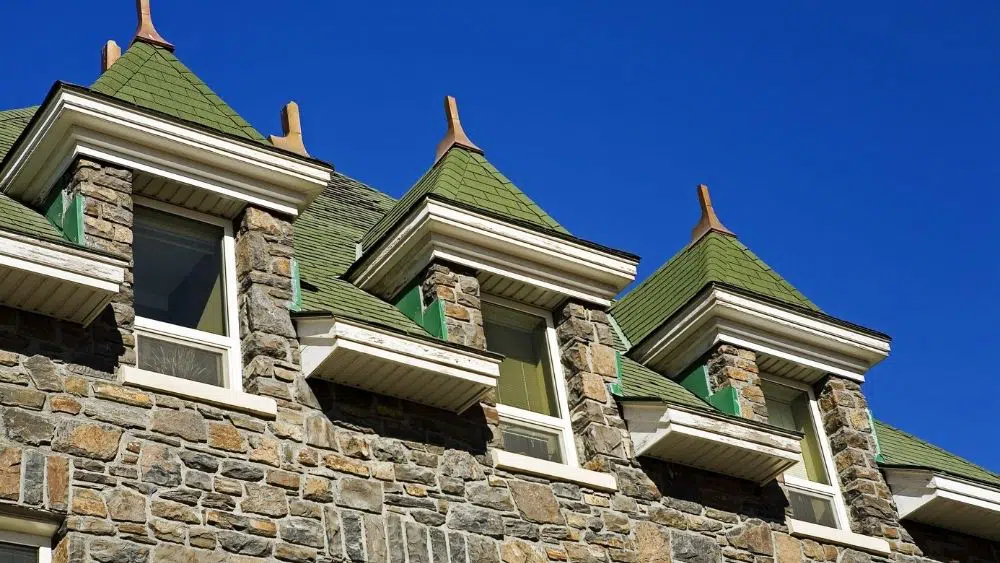
Stone Design and Installation
After choosing whether you want to use real or manufactured stone veneer siding, homeowners can now select their design and installation method. Here are a few design and installation options to discuss with your builder.
Full Stone Siding
For homeowners who want the natural beauty and durability of stone, full stone siding is the real deal. However, it is not the most practical option for those with a strict budget. It has high labor costs because it must be installed stone by stone. Those who choose full stone siding love it for its beauty and long lifespan.
Cultured Stone Siding
Cultured siding is an affordable alternative to full stone siding. Instead, it is manufactured stones that are cast from molds to replicate the look of stone siding. They are far lighter than real stone and easier to transport, but still require an extensive installation process.
Stone Cladding
Natural stone cladding, on the other hand, is cut and sold as large slabs. It is installed similarly to brick and is often in a tight, staggered pattern. Depending on the stone, it can offer a natural, rugged look or sleek and stylish aesthetic. It is easier to install than full stone siding, but the large size of the slabs make it close in cost for materials and installation.
Faux Stone Panel Siding
Manufactured stone is also available in polyurethane faux stone panels. These durable panels are created as a lightweight and easy-to-install alternative to real stone. By installing large panels rather than stone by stone, these panels offer easier installation and the same seamless look of real stone, not to mention the same level of home protection.
Veneer Panel Stone Siding
For homeowners who want the look of real stone but don’t want to break the bank, veneer panel stone siding is a better choice. It uses thin cuts of real stone that are set in panels that simply click into place. Similar to faux stone panels, these sheets create a simpler installation process and ready-made professional design.
Veneer panels offer the durability and longevity of natural stone without the hassle of installation at a fraction of the cost. Veneer is typically priced around the same as faux stone siding panels, but may be slightly more expensive due to the real stone.
Types of Stone Used for Siding
Here are seven different types of natural stone to consider for a stylish home exterior. The type of stone can also limit the color availability.
Flint
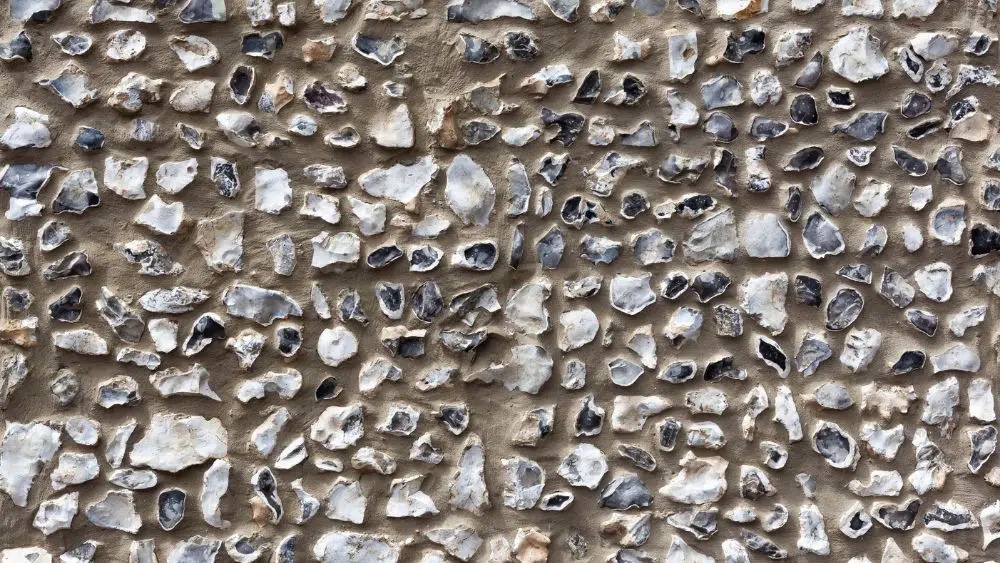
Flint has maintained popularity since its early use in England due to its durability and longevity. It can easily be cut and arranged for a unique look. Today, flint is primarily sold in solid hues such as black, gray, tan, and blue.
Granite
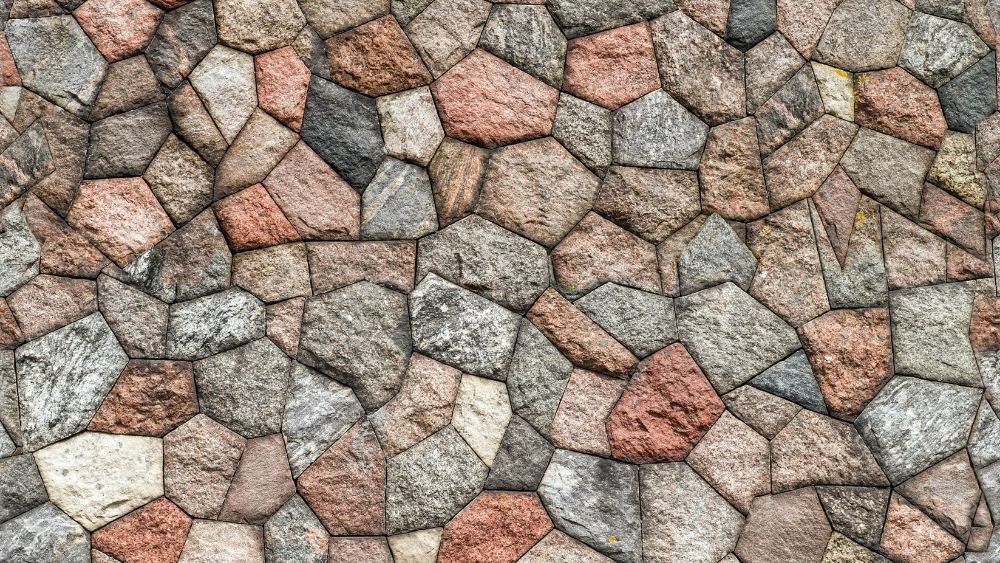
For a speckled, natural look, granite is a top choice stone. As one of the hardest stones on the market, granite is known for extreme durability. It offers a lovely appearance flecked with colors, widely available in pink, white, and in variations of gray and black. The swirled grainy appearance can be left in its natural rough state or polished to create a sleek and smooth surface.
Limestone

Limestone is an ideal choice for exterior cladding because it weathers nicely over time and gives the siding character. It is easily sculpted to fit any aesthetic and its light in coloring offers a unique elegance and bright appearance.
Travertine
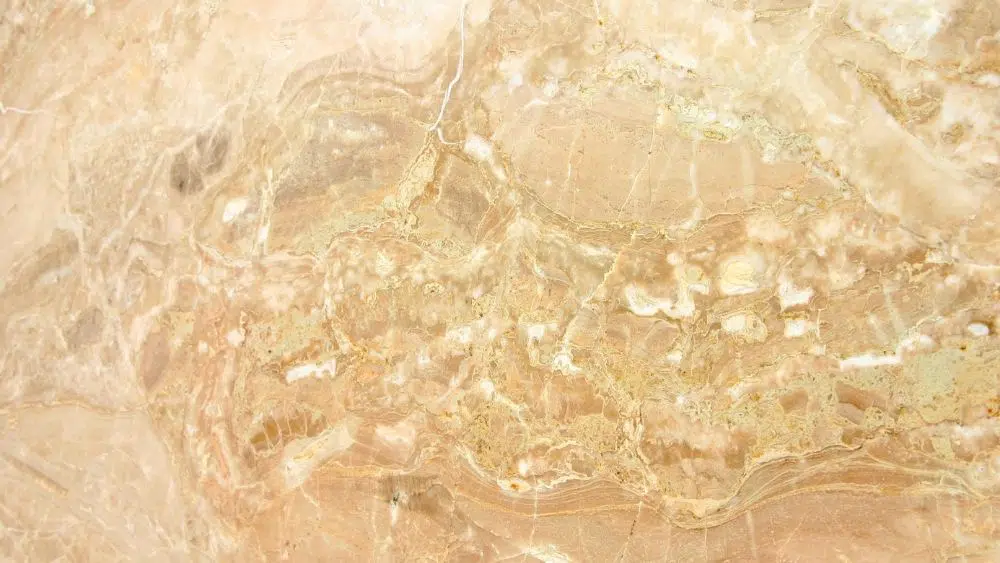
Travertine is a type of limestone known for its distinctive character and unique swirl patterns. It is formed by mineral deposits from natural hot springs, boasting simple cream-colored tones and gorgeous patterns. Travertine, unlike standard limestone, is available in a variety of colors like pink, orange, and gray.
Marble
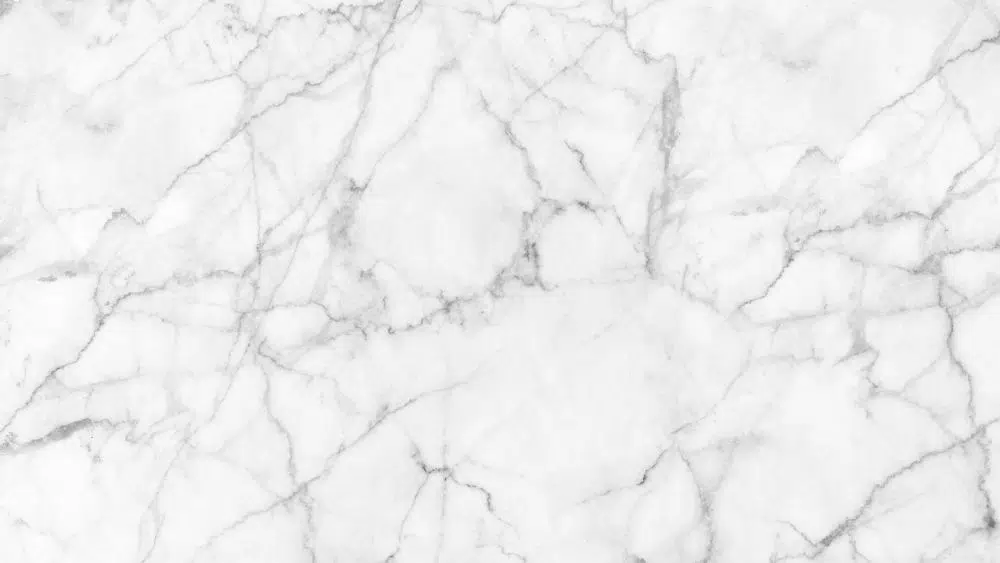
Known for its distinctive and classic look, marble is often associated with high-end luxury homes. When used on the exterior of a home, marble requires extra maintenance to maintain its gorgeous and glossy appearance. It offers unparalleled durability and longevity if well-maintained. Marble’s polished appearance comes in a variety of colors to match any home aesthetic, from gray to brown, purple to pink, and even two-toned combinations.
Sandstone
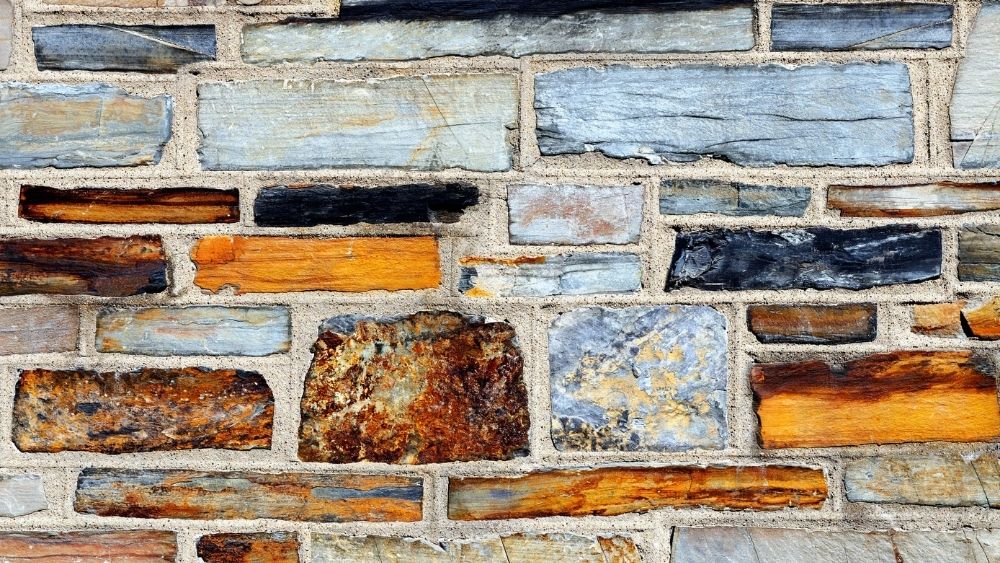
Widely popular in sunny climates, sandstone has a reflective quality which creates a unique appearance. It can easily be cut into any desired style. Sandstone is also available in a wide variety of colors ranging from neutrals to bold hues, including but not limited to white, orange, yellow, pink, and purple.
Quartzite

Similar to marble in its appearance and durability, quartzite can add a touch of high-end style and the appearance of luxury to your home. If well-maintained, quartzite can last years and stay in excellent condition. It has a slight reflective property that gently sparkles in the light. It can be found in an array of colors including gray, white, blue, pink, purple, and brown.
Stone Siding is for Any Home
Stone siding can fit with any home’s style. Some homeowners select irregular and rough textures to invoke a rustic vibe for a woodland or country home. Polished and smooth marble panels can make a subtle statement for your high-end, luxury estate. Aged limestone creates a classic look to your Southwest-style aesthetic, while evenly-spaced quartz panels can give your Colonial-style home a fresh, distinctive look. With so many stone siding options, the design possibilities are endless!

Melanie Theriault is a writer, counselor, and lifelong learner. She holds a B.A. in Sociology from Southwestern University, where she discovered her passion for fostering human connection through storytelling.
 Is it Smart to Invest in a Golf Course Home?
Is it Smart to Invest in a Golf Course Home?